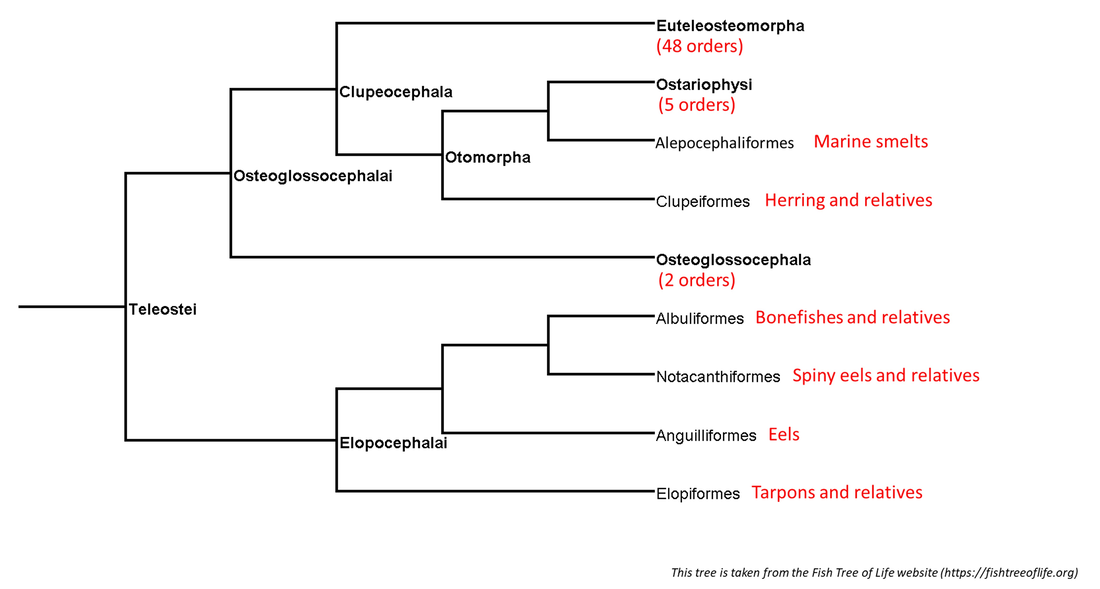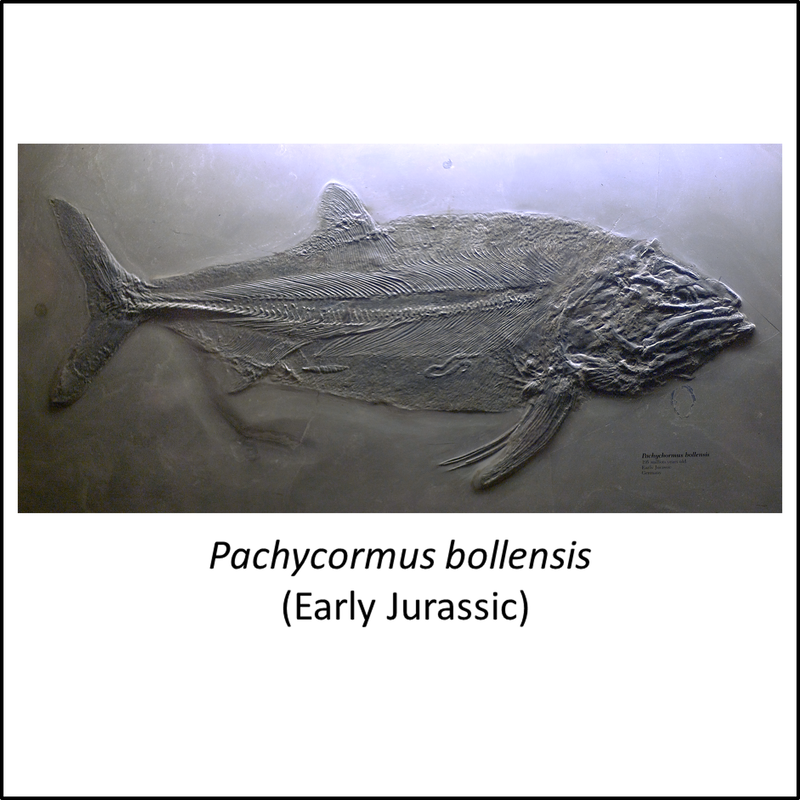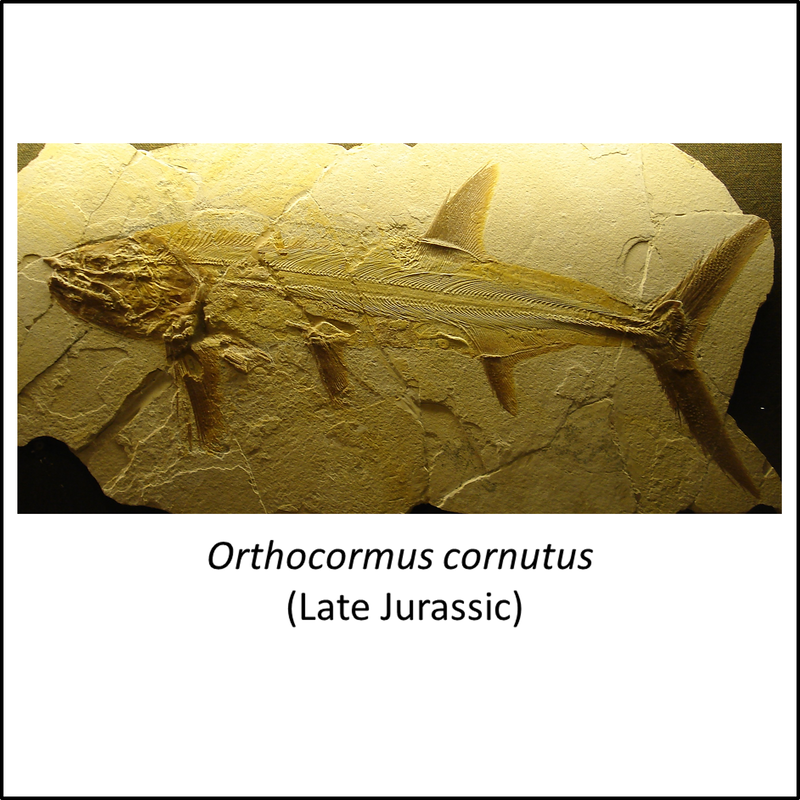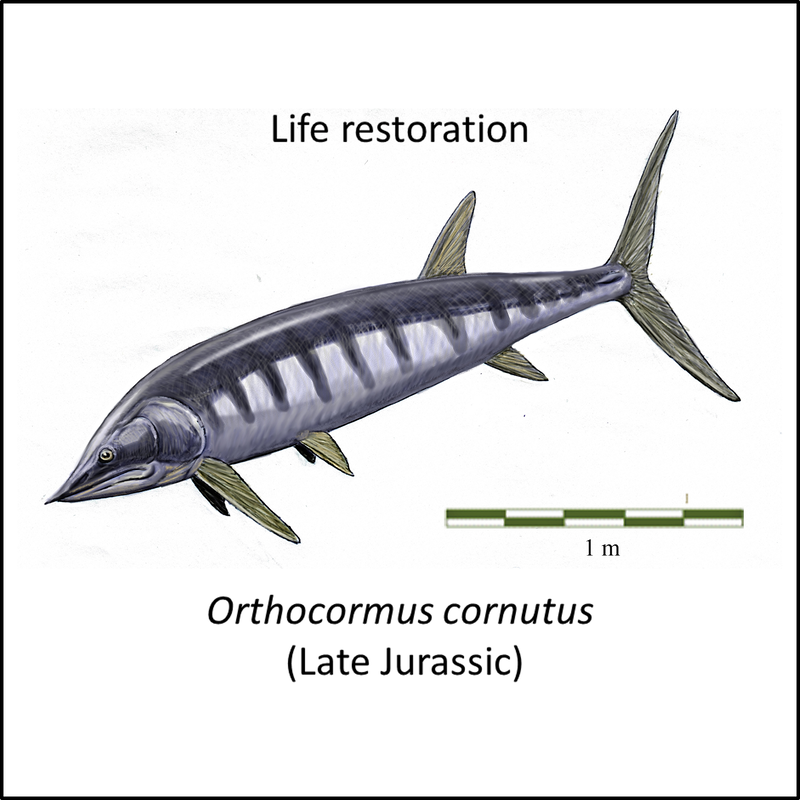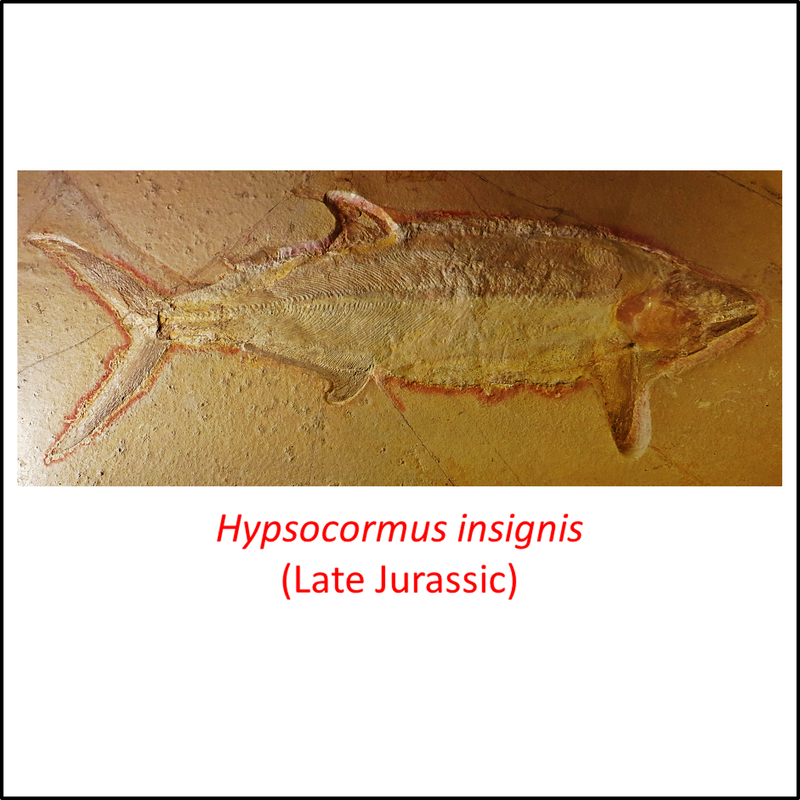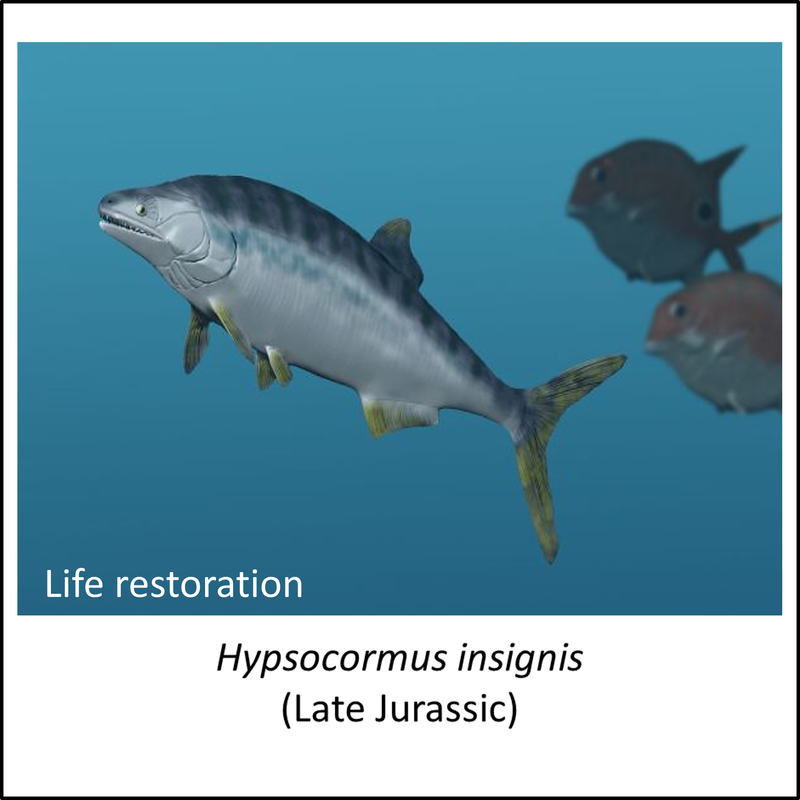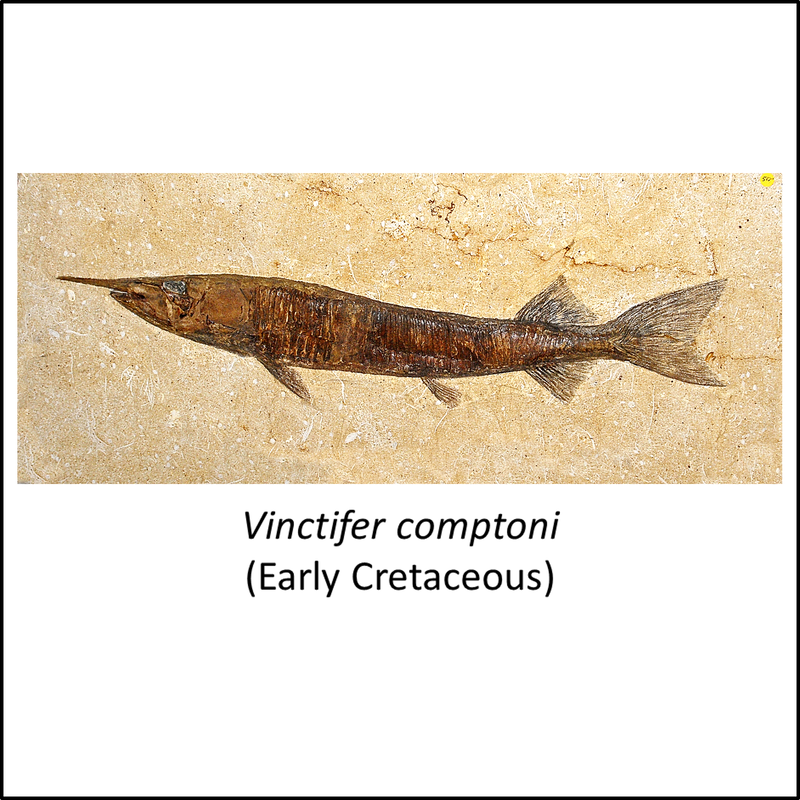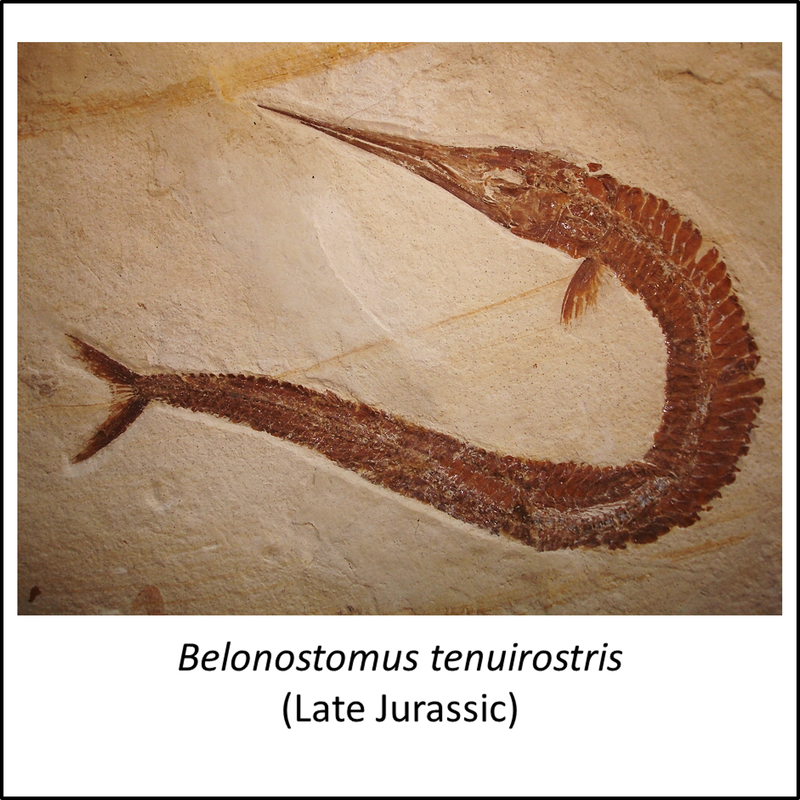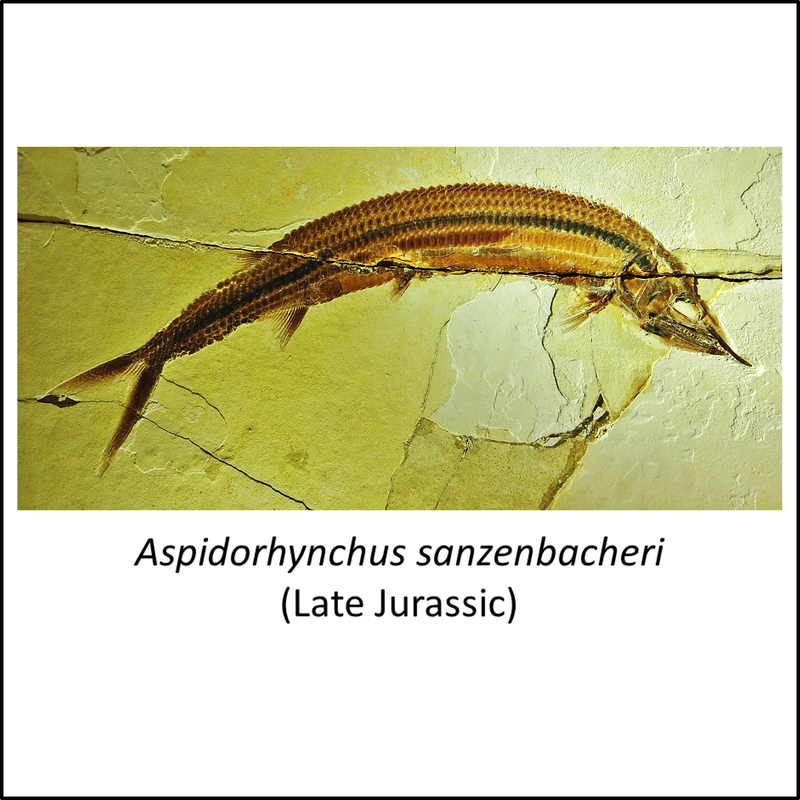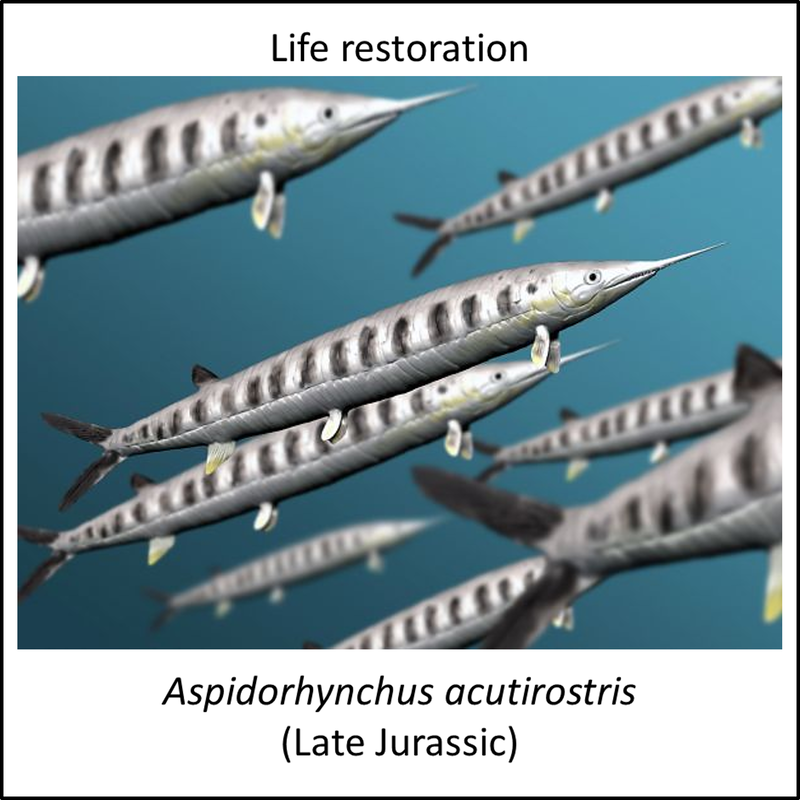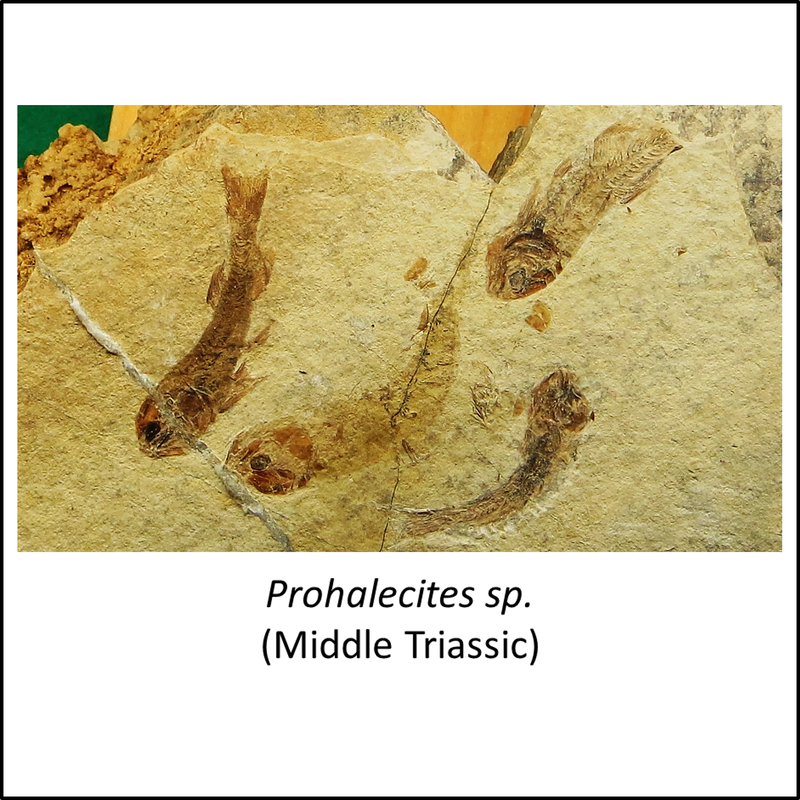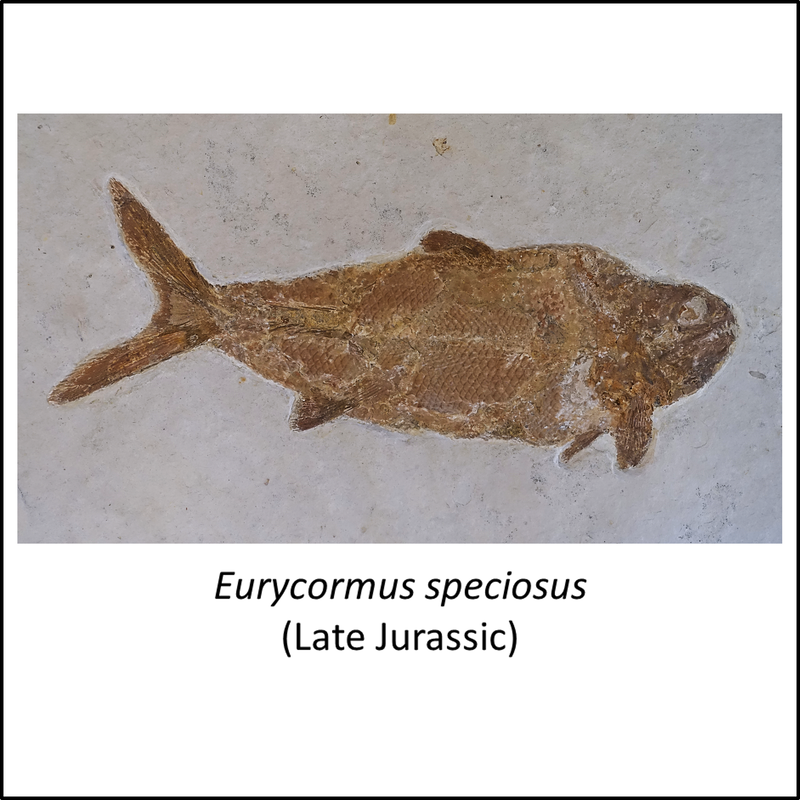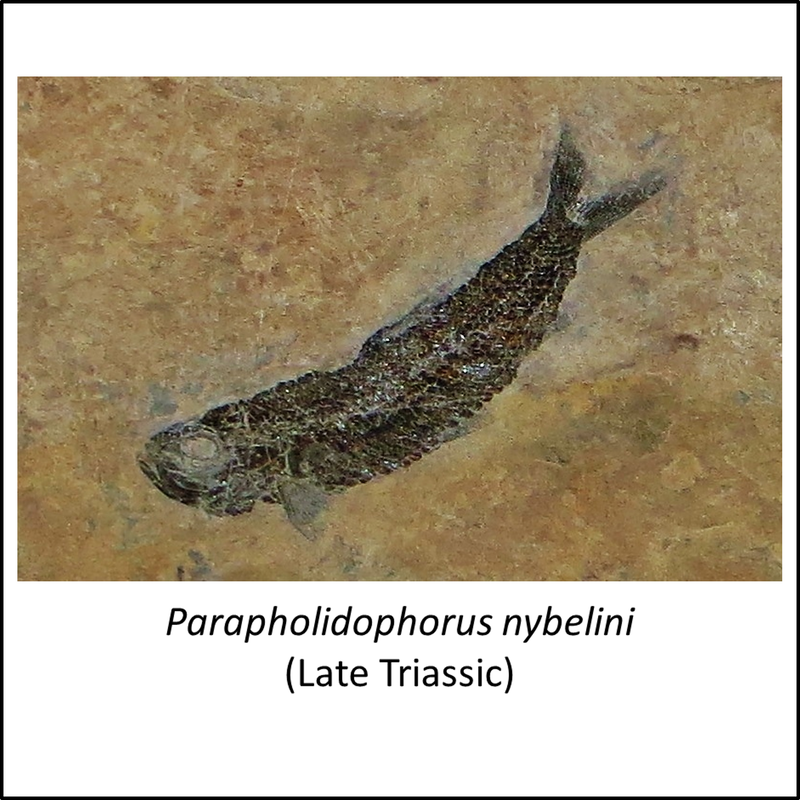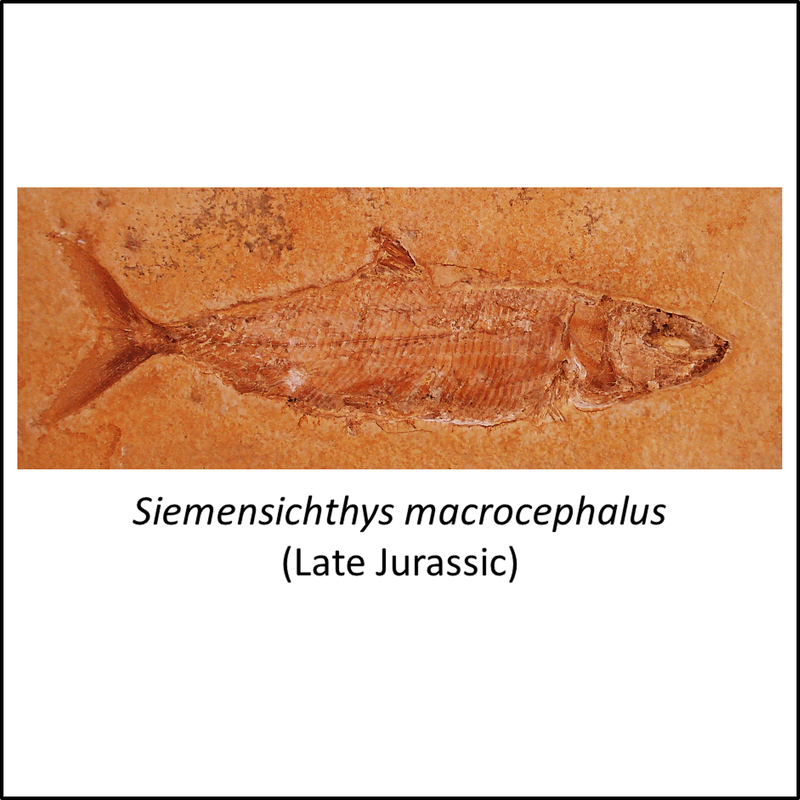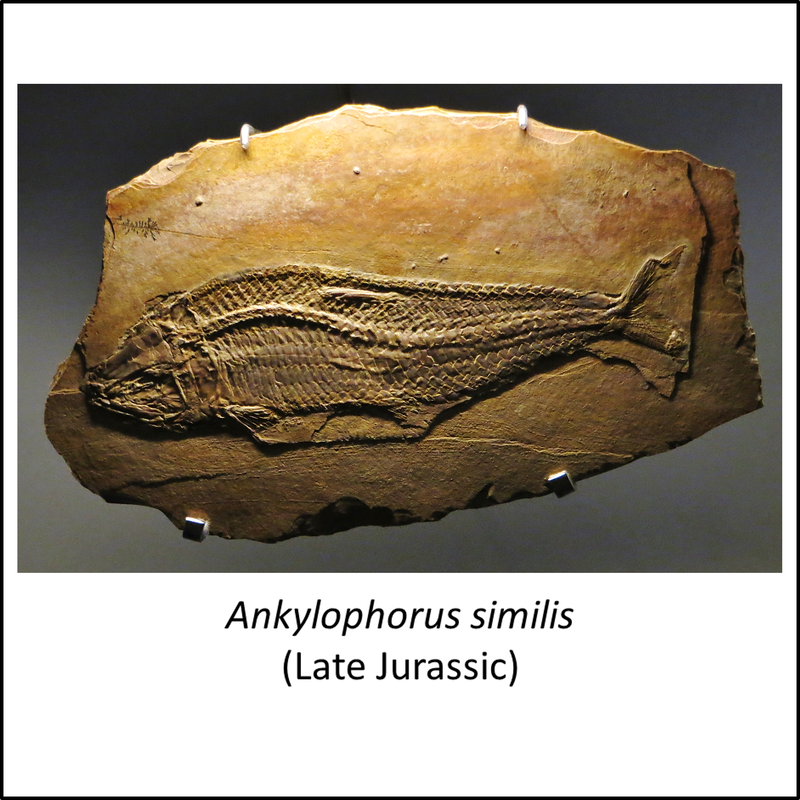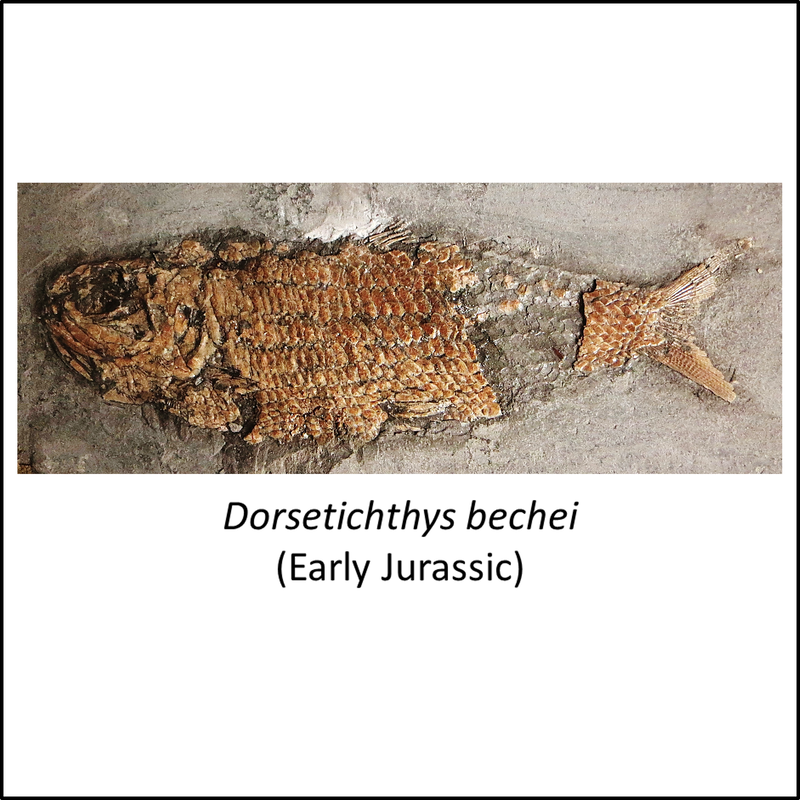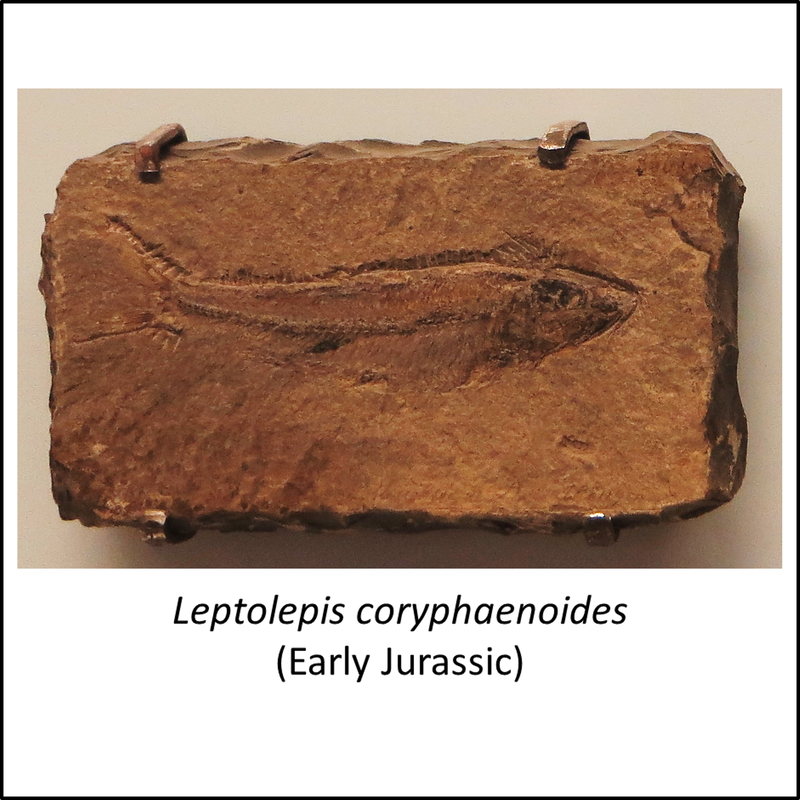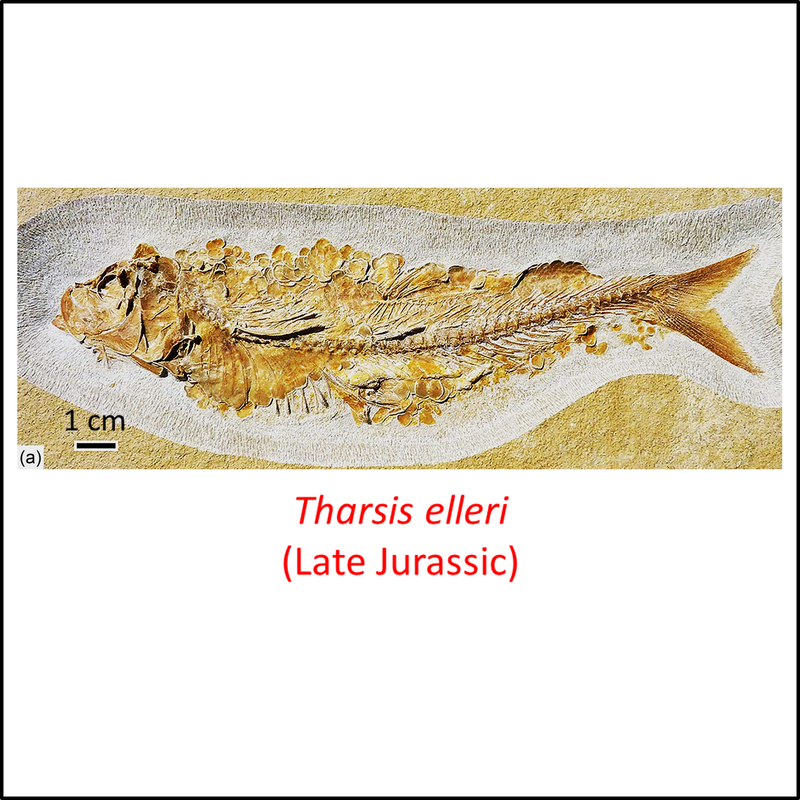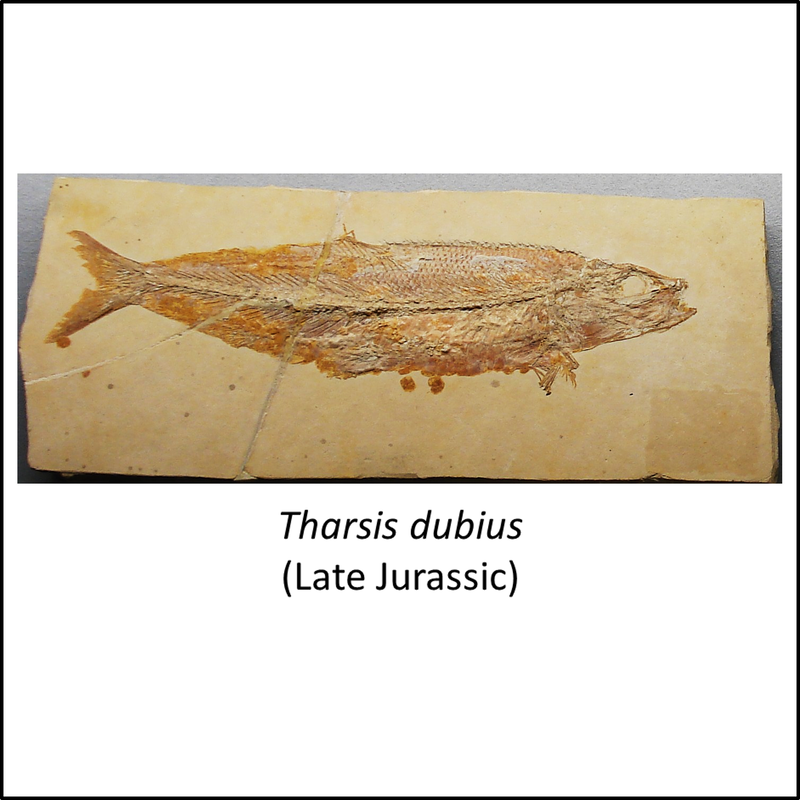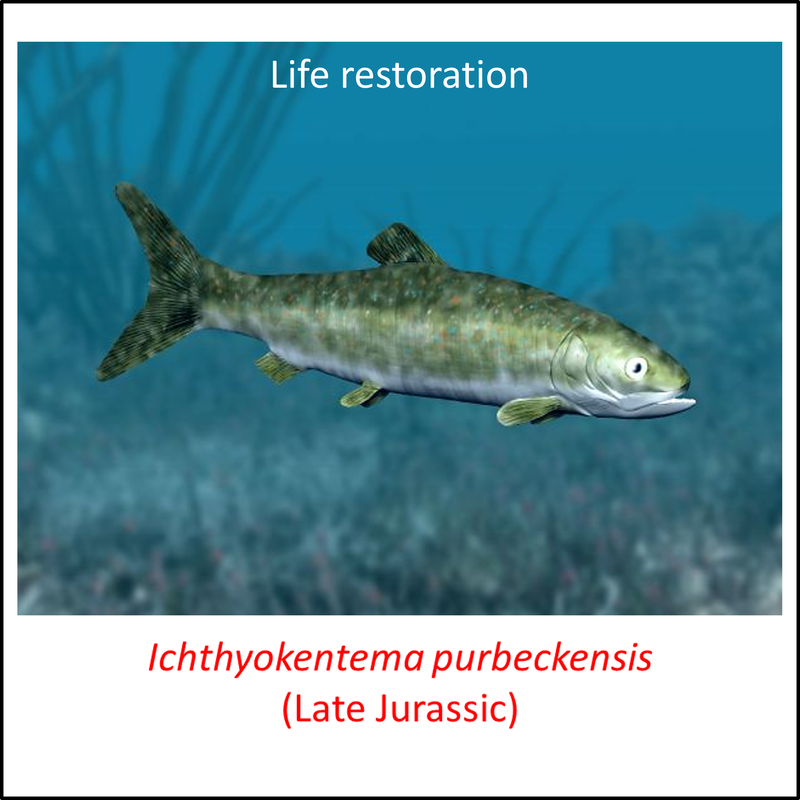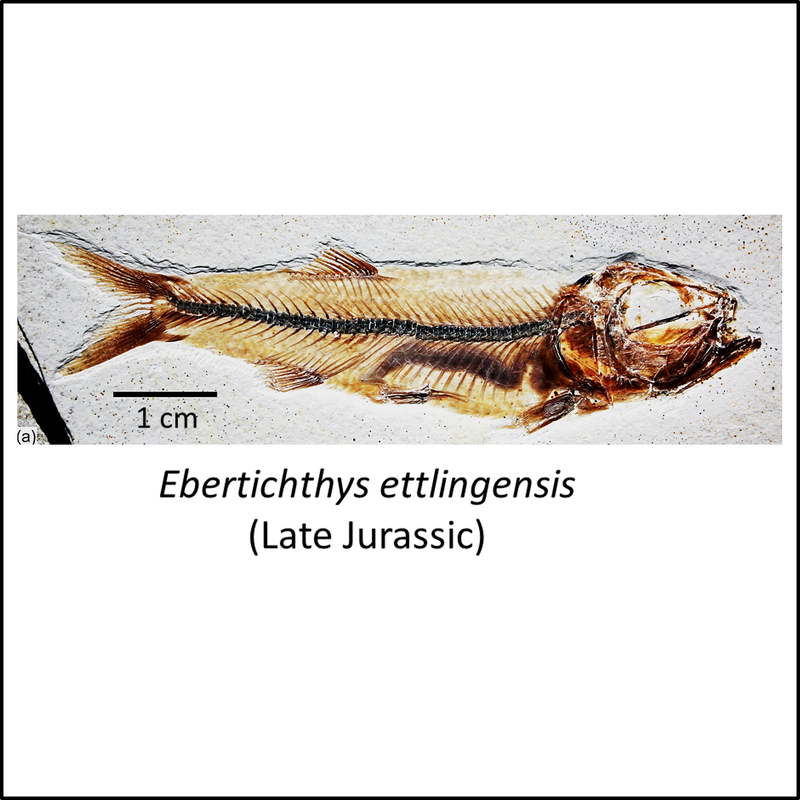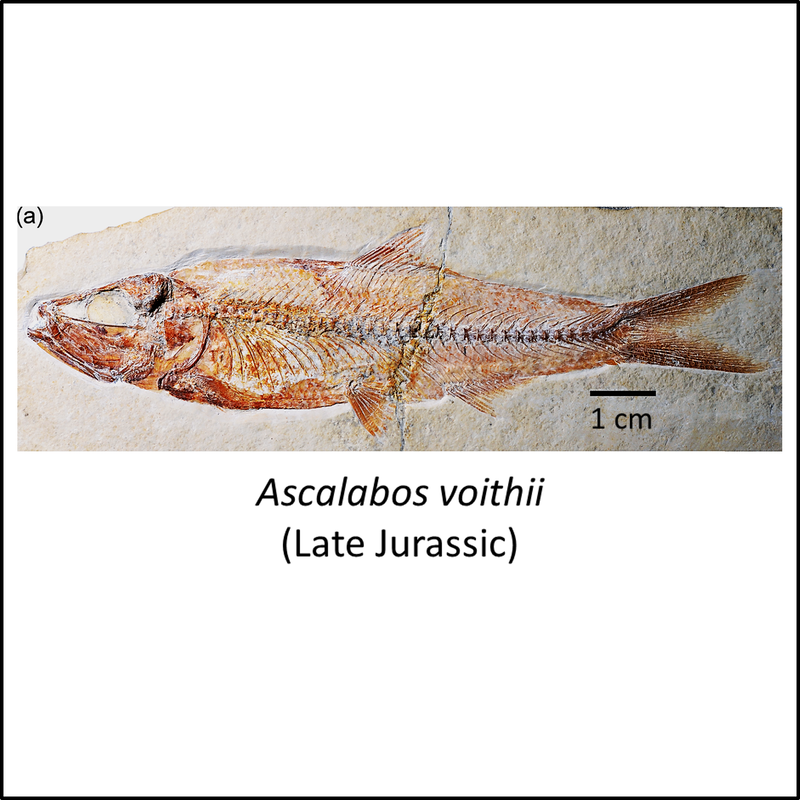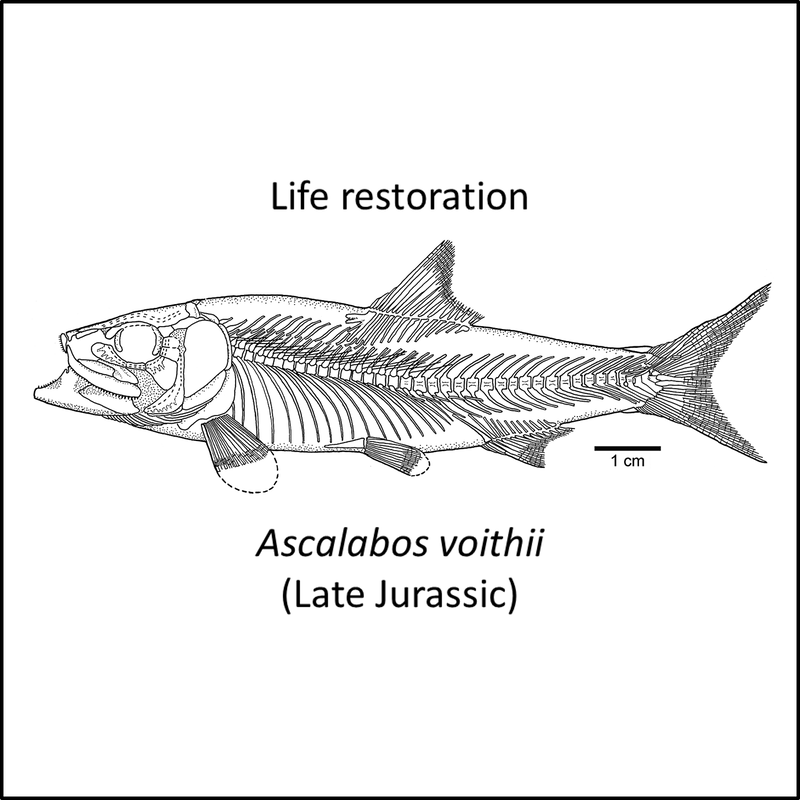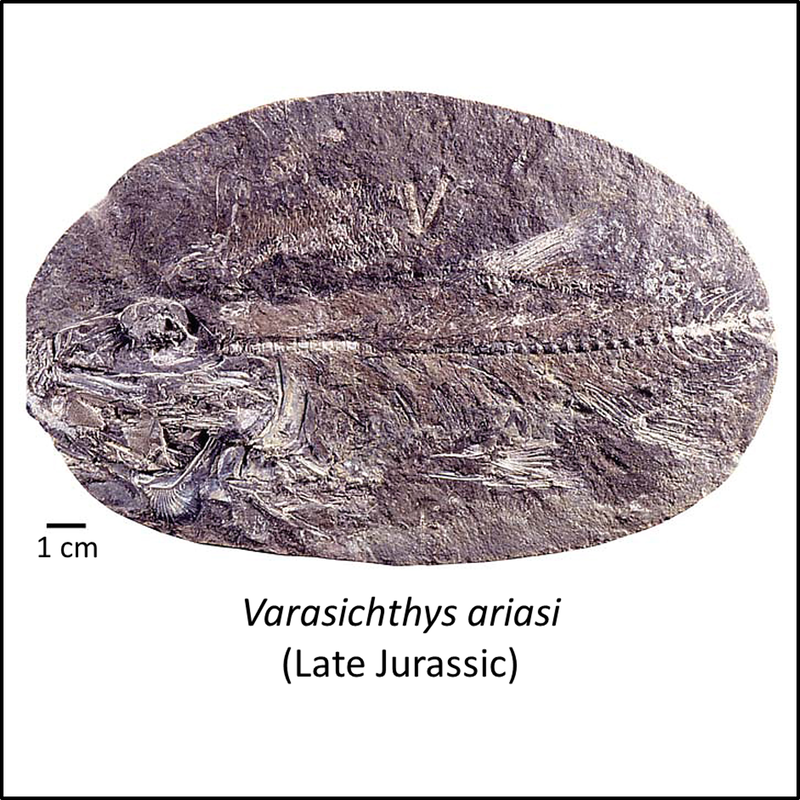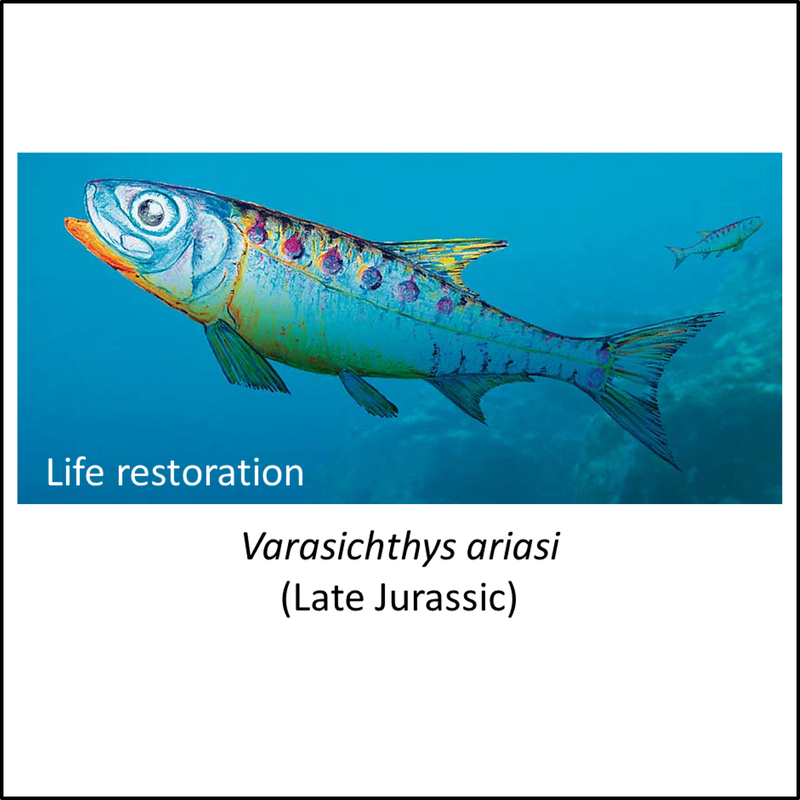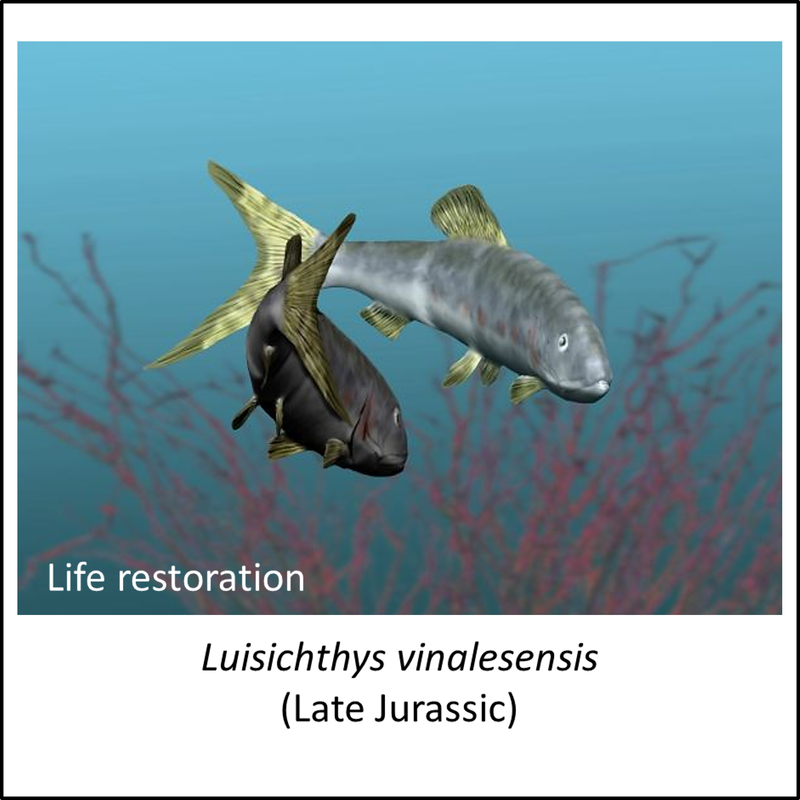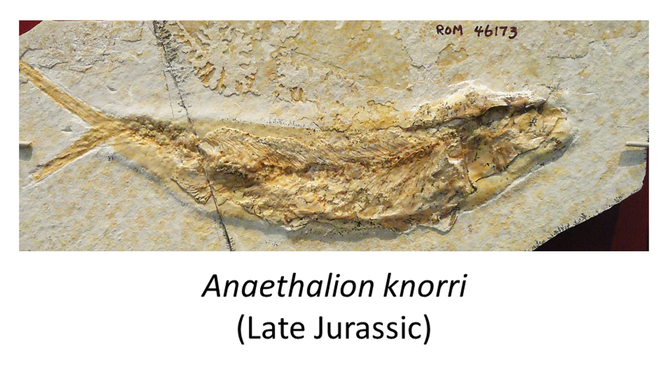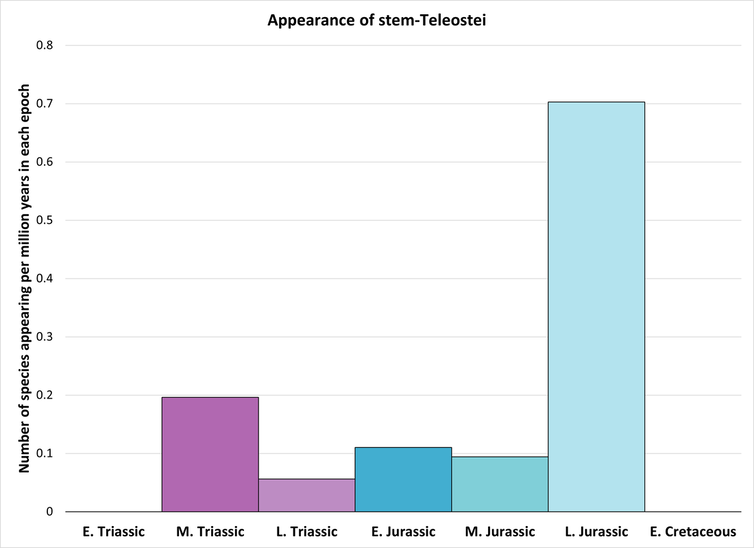This page deals with the stem group of the teleostean fishes (class Teleostei, Superclass Actinopterygii), which comprise a clade that contains most of the ray-finned fishes alive in the world today, with nearly 30,000 species (Ravi and Venkatesh, 2018). They consist of two major divisions ("megacohorts"), the Elopocephalai and the Osteoglossocephalai, as shown in the following phylogenetic tree:
Figure 1. Phylogenetic tree of living Teleostei
The stem-Teleostei are very well represented in the fossil record. Their phylogeny is shown below in a combined time tree taken from two recent publications:
Figure 2. Time tree of the stem-Teleostei
The oldest known member of the stem-Teleostei is the genus Parapholidophorus, which has been described from the Middle Triassic (Ladinian) of Catalonia, Spain (Beltan, 1972, cited in Fossilworks; Arratia, 2017). No image is available of that fossil, which was not assigned to a species, but a Late Triassic species of genus Parapholidophorus (P. nybelini), together with other members of the stem group, are shown below (click on image for larger version):
Names in red indicate that the fossil is younger than the oldest known crown-group fossil.
Figure 3. Images of stem-group Teleostei
The images shown above are numbered in order from most basal towards the crown group, but no obvious trends can be seen.
The earliest known member of the teleostean crown group is Anaethalion zapporum, a member of the total-group Elopomorpha (synonymous with the Elopocephalai) found in the Late Jurassic (Late Kimmeridgian) Rögling Formation at the village of Schamhaupten, near Eichstätt, Bavaria, Germany (Benton et al, 2015). No image of this species is available in the public domain, but another species of the same genus is shown below:
The earliest known member of the teleostean crown group is Anaethalion zapporum, a member of the total-group Elopomorpha (synonymous with the Elopocephalai) found in the Late Jurassic (Late Kimmeridgian) Rögling Formation at the village of Schamhaupten, near Eichstätt, Bavaria, Germany (Benton et al, 2015). No image of this species is available in the public domain, but another species of the same genus is shown below:
Figure 4. Image of oldest known member of the crown-Teleostei
Making allowance for the ghost lineage on the teleostean stem line (Figure 2), the time between the origin of the teleostean stem group and the initiation of the crown group was at least 97 million years, from Early Triassic to Late Jurassic time. However, as indicated in the histogram below, the rate of appearance of new stem-group genera was highest during the Middle Triassic and the Late Jurassic:
Figure 5. Rate of appearance of stem-Teleostei (predating the crown group and including only the genera shown in Figure 2)
References
Arratia, G. (2017). New Triassic teleosts (Actinopterygii, Teleosteomorpha) from northern Italy and their phylogenetic relationships among the most basal teleosts. Journal of Vertebrate Paleontology, 37(2), e1312690.
Beltan, L.L. (1972). La faune Ichthyologique du Muschelkalk de la Catalogne. Memorias de la Real Academia de Ciencias y Artes XLI:281-325.
Benton, M. J., Donoghue, P. C., Asher, R. J., Friedman, M., Near, T. J., & Vinther, J. (2015). Constraints on the timescale of animal evolutionary history. Palaeontologia Electronica, 18(1), 1-106.
López-Arbarello, A., & Sferco, E. (2018). Neopterygian phylogeny: the merger assay. Royal Society Open Science, 5(3), 172337.
Ravi, V., & Venkatesh, B. (2018). The Divergent Genomes of Teleosts. Annual Review of Animal Biosciences, 6:1, 47-68.
Beltan, L.L. (1972). La faune Ichthyologique du Muschelkalk de la Catalogne. Memorias de la Real Academia de Ciencias y Artes XLI:281-325.
Benton, M. J., Donoghue, P. C., Asher, R. J., Friedman, M., Near, T. J., & Vinther, J. (2015). Constraints on the timescale of animal evolutionary history. Palaeontologia Electronica, 18(1), 1-106.
López-Arbarello, A., & Sferco, E. (2018). Neopterygian phylogeny: the merger assay. Royal Society Open Science, 5(3), 172337.
Ravi, V., & Venkatesh, B. (2018). The Divergent Genomes of Teleosts. Annual Review of Animal Biosciences, 6:1, 47-68.
Image credits - Stem-Teleostei
- Header (Banded Archerfish, Toxotes jaculatrix, Schönbrunn Zoo, Vienna): Norbert Potensky, CC BY-SA 3.0 <https://creativecommons.org/licenses/by-sa/3.0>, via Wikimedia Commons
- Figure 3 (Pachycormus bollensis): Jeff Kubina from the milky way galaxy, CC BY-SA 2.0 <https://creativecommons.org/licenses/by-sa/2.0>, via Wikimedia Commons
- Figure 3 (Orthocormus cornutus, fossil): Ghedoghedo, CC BY-SA 3.0 <https://creativecommons.org/licenses/by-sa/3.0>, via Wikimedia Commons
- Figure 3 (Orthocormus cornutus, life restoration): DiBgd, CC BY-SA 4.0 <https://creativecommons.org/licenses/by-sa/4.0>, via Wikimedia Commons
- Figure 3 (Hypsocormus insignis, fossil): Leo Fyllnet, CC BY-SA 4.0 <https://creativecommons.org/licenses/by-sa/4.0>, via Wikimedia Commons
- Figure 3 (Hypsocormus insignis, life restoration): Nobu Tamura under a Creative Commons 3.0 Unported (CC BY-NC-ND 3.0) license
- Figure 3 (Vinctifer comptoni): Hectonichus, CC BY-SA 3.0 <https://creativecommons.org/licenses/by-sa/3.0>, via Wikimedia Commons
- Figure 3 (Belonostomus tenuirostris): Oilshale, CC BY-SA 4.0 <https://creativecommons.org/licenses/by-sa/4.0>, via Wikimedia Commons
- Figure 3 (Aspidorhynchus sanzenbacheri): Ghedoghedo, CC BY-SA 4.0 <https://creativecommons.org/licenses/by-sa/4.0>, via Wikimedia Commons
- Figure 3 (Aspidorhynchus acutirostris): Nobu Tamura under a Creative Commons 3.0 Unported (CC BY-NC-ND 3.0) license
- Figure 3 (Prohalecites sp.): Ghedoghedo, CC BY-SA 4.0 <https://creativecommons.org/licenses/by-sa/4.0>, via Wikimedia Commons
- Figure 3 (Eurycormus speciosus): Gloria Arratia & Hans-Peter Schultze, CC BY-SA 4.0 <https://creativecommons.org/licenses/by-sa/4.0>, via Wikimedia Commons
- Figure 3 (Parapholidophorus nybelini): Ghedoghedo, CC BY-SA 3.0 <https://creativecommons.org/licenses/by-sa/3.0>, via Wikimedia Commons
- Figure 3 (Siemensichthys macrocephalus): Ghedoghedo, CC BY-SA 3.0 <https://creativecommons.org/licenses/by-sa/3.0>, via Wikimedia Commons
- Figure 3 (Ankylophorus similis): Ghedoghedo, CC BY-SA 4.0 <https://creativecommons.org/licenses/by-sa/4.0>, via Wikimedia Commons
- Figure 3 (Ichthyokentema purbeckensis): Nobu Tamura under a Creative Commons 3.0 Unported (CC BY-NC-ND 3.0) license
- Figure 3 (Dorsetichthys bechei): Ghedoghedo, CC BY-SA 4.0 <https://creativecommons.org/licenses/by-sa/4.0>, via Wikimedia Commons
- Figure 3 (Leptolepis coryphaenoides): Ghedoghedo, CC BY-SA 4.0 <https://creativecommons.org/licenses/by-sa/4.0>, via Wikimedia Commons
- Figure 3 (Tharsis elleri): Open Access article Arratia, G., Schultze, H. P., & Tischlinger, H. (2019). On a remarkable new species of Tharsis, a Late Jurassic teleostean fish from southern Germany: its morphology and phylogenetic relationships. Fossil Record, 22(1).
- Figure 3 (Tharsis dubius): Ghedoghedo, CC BY-SA 3.0 <https://creativecommons.org/licenses/by-sa/3.0>, via Wikimedia Commons
- Figure 3 (Ebertichthys ettlingensis): Open Access article Arratia, G. (2016). New remarkable Late Jurassic teleosts from southern Germany: Ascalaboidae n. fam., its content, morphology, and phylogenetic relationships. Fossil Record, 19(1), 31-59.
- Figure 3 (Ascalabos voithii, fossil): Open Access article Arratia, G. (2016). New remarkable Late Jurassic teleosts from southern Germany: Ascalaboidae n. fam., its content, morphology, and phylogenetic relationships. Fossil Record, 19(1), 31-59.
- Figure 3 (Ascalabos voithii, life restoration): Open Access article Arratia, G. (2016). New remarkable Late Jurassic teleosts from southern Germany: Ascalaboidae n. fam., its content, morphology, and phylogenetic relationships. Fossil Record, 19(1), 31-59.
- Figure 3 (Varasichthys ariasi, fossil): Sergio Soto-Acuña; Rodrigo A. Otero; David Rubilar-Rogers; Alexander O. Vargas, CC BY-SA 4.0 <https://creativecommons.org/licenses/by-sa/4.0>, via Wikimedia Commons
- Figure 3 (Varasichthys ariasi, life restoration): Art by Gloria Arratia. Published by Sergio Soto-Acuña; Rodrigo A. Otero; David Rubilar-Rogers; Alexander O. Vargas, CC BY-SA 4.0 <https://creativecommons.org/licenses/by-sa/4.0>, via Wikimedia Commons
- Figure 3 ( Luisichthys vinalesensis): Nobu Tamura under a Creative Commons 3.0 Unported (CC BY-NC-ND 3.0) license
- Figure 4: Daderot, CC0, via Wikimedia Commons
